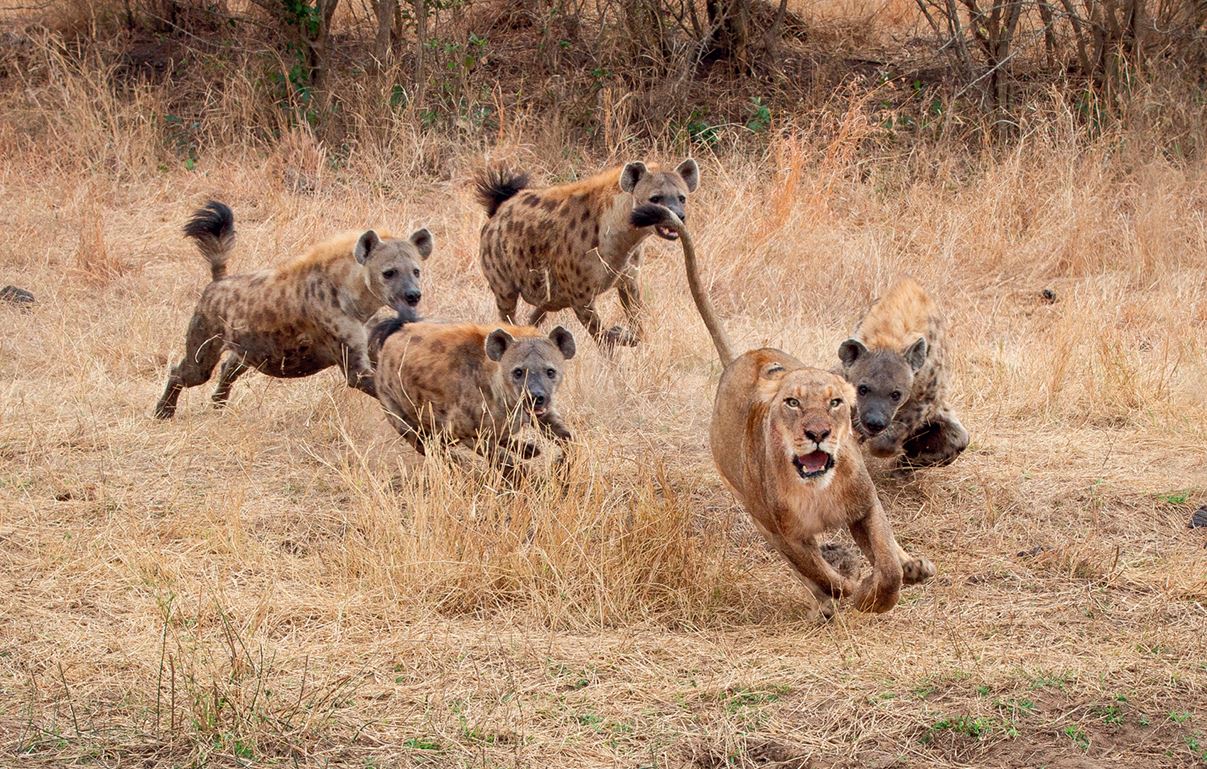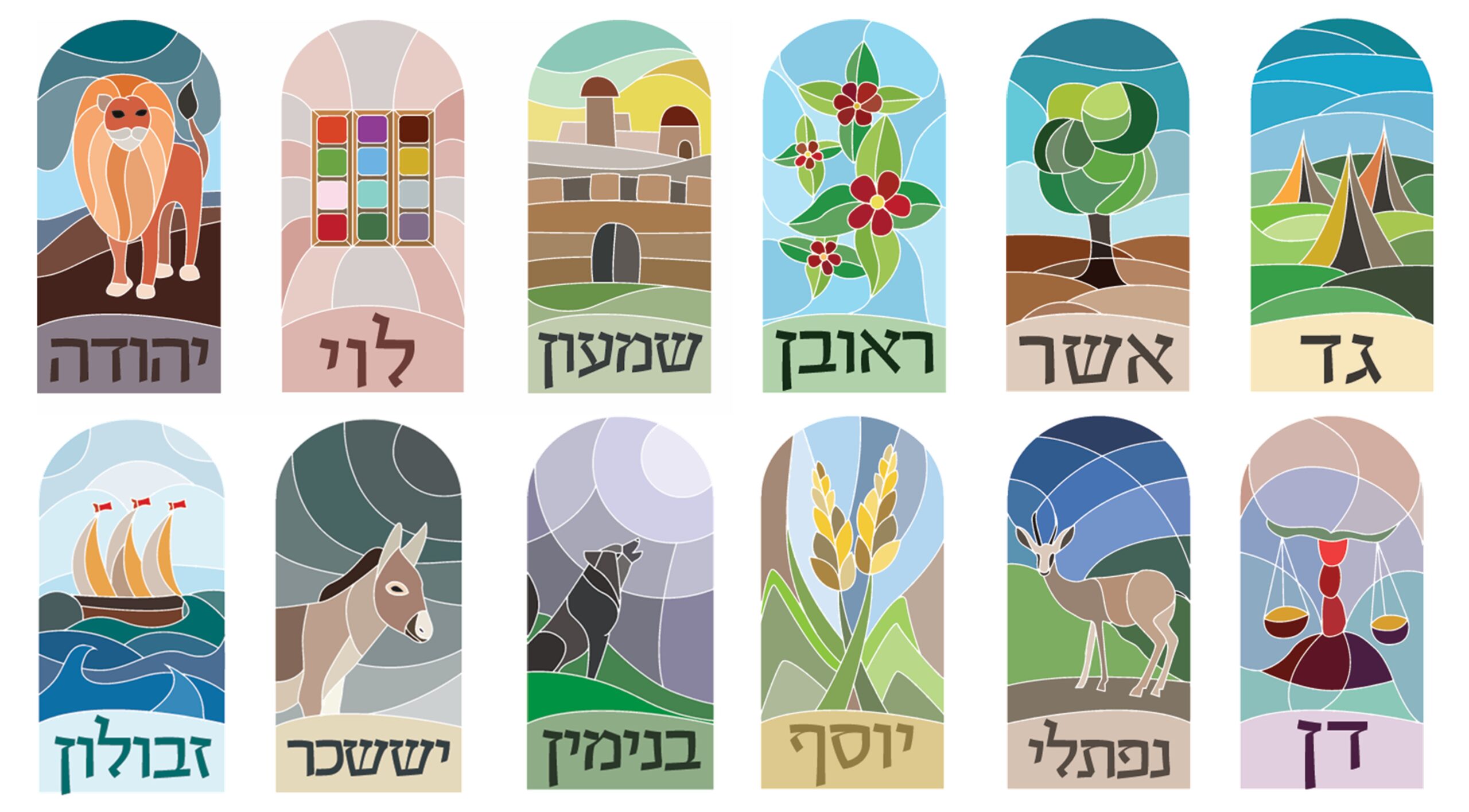The Syrian striped hyena (Hyaena hyaena syriaca) was certainly native to Israel and was only exterminated there in the 1930s. However, it is not immediately apparent in most Bible translations.
Hyenas belong to the suborder of feliforms (Feliformia). The species found in the Middle East are almost silent and emit only soft growls when threatened. Bible translators who assign them to this verse did not do thorough research: “Hyenas will howl in deserted palaces…” (Isa 13:22). The same Hebrew word also appears in Isaiah 34:14 and Jeremiah 50:39, and therefore refers to a different animal in those contexts as well – even though hyenas are indeed typical steppe dwellers.

“Is my heritage to me like a speckled bird of prey that other birds of prey surround?” (Jer 12:9) – The imagery of this verse is difficult to translate and does not make much sense in many Bibles. Only when the hyena is introduced instead of the “speckled bird,” as in most modern adaptations, does it become clearer: “Has my inheritance become a hyena’s lair to me? Are birds of prey circling around it?” (Jer 12:9, Zü). This rendering is supported by the Septuagint (LXX), where the Greek word hyaina is used.
This expression also appears in the apocryphal book of Sirach, written around the same time as the LXX: “What peace is there between a hyena and a dog? And what peace between the rich and the poor?” (Sir 13:22). The Hebrew word zabua means “multicolored, speckled” or “(striped) in appearance” and matches the physical traits of the striped hyena. It can also mean “double-faced” and may refer to the legend that the hyena is hermaphroditic or can change its sex. This belief is falsely attributed to Aristotle, even though he actually refuted it and explained the facts quite accurately. Female hyenas display a unique masculinization among mammals: they mimic male external genitalia and are otherwise hardly distinguishable from males. The pack is not only led by a female, but even the highest-ranking male comes after the lowest-ranking female. A true matriarchy! The Hebrew place name Zeboim means “Place of Hyenas” (Neh 11:34), and ge-zebo’im is rendered in some translations as “Valley of Hyenas” (1Sam 13:18). The personal name Zibeon is borne by a hyena-like Edomite prince (Gen 36:2.14.20.24.29; 1Chr 1:38.40).

Even ancient writers observed that the hyena is a mortal enemy of the dog. Relations between canids and feliforms are often tense, but in this case it’s nothing “personal.” Somehow, hyenas instinctively know that a dog can only survive in a pack. They merely need to alternately harass it from a safe distance to prevent it from resting, eating, or drinking. Eventually, the dog collapses from exhaustion and weakness, and they can safely attack.
They also detect when animals are giving birth and seize the moment of greatest vulnerability to overpower them. It’s a cruel irony that birth is also extremely difficult and prolonged for hyenas themselves (with less than half of the newborns surviving!). The entire process can last up to twelve hours, during which the female is in great pain and defenceless. For hyena mothers, the number one cause of death is being killed during labor by a lion, which has a keen sense of smell as well.
For the striped hyena, actual hunting expeditions are rare. They typically search for carrion like vultures. Unlike vultures, however, which wait until an animal is dead, these relentless scavengers have a remarkable instinct for targeting sick, elderly, or wounded animals that are no longer capable of resistance and “finish them off” before consuming them.
Chasing runaway dogs to death, attacking birthing animals, and selectively preying on the sick and weak – this hardly seems “chivalrous” and has earned the hyena a reputation for cowardice and treachery. With their shaggy, often heavily soiled and matted fur, they are not exactly eye-catching, and their sloping backs and weaker hind legs give them a limping gait that appears quite awkward.

They are certainly not crowd-pleasers. Yet they play a crucial role in the ecological web of the semi-desert as nature’s “health police”: While the African savannas host large vulture populations that dispose of animal remains, in the Middle East, where vultures are scarce, this task falls primarily to the hyenas – making them seem like miserable trash scavengers.
So what does the statement mean: “Has my inheritance become a hyena’s lair to me? Are birds of prey circling around it?” (Jer 12:9)? The concept of inheritance plays a significant role in the Bible. Israel – the “Promised Land” – was divided among the tribes, clans, and families, and specific regulations ensured that a property could remain within the recipient’s inheritance line. God’s blessing, which He intended to give His people here on earth, was tied to the preservation of this inheritance. Since the striped hyena feeds almost exclusively on carrion, this verse implies that the sacred inheritance has become a desecrated graveyard as a result of God’s judgment – where such animals gorge themselves. Throughout its history, the people of Israel lost their inheritance multiple times due to deportation and military occupation.

However, the New Testament makes it clear that the decisive and enduring blessing of God is independent of fields, pastures, vineyards, and olive groves. The Jews living in the Diaspora – the global dispersion – had relinquished and lost their land holdings. Perhaps the land had become overgrown or had been ritually defiled through pagan practices. Peter wrote to them about “eternal life,” which through the resurrection of Jesus Christ became a living hope and “an inheritance incorruptible and undefiled and unfading,” which “is reserved in heaven” (1Pet 1:4). Incorruptible (without death), undefiled (without sin), and unfading (without decay) – this is the future glory that awaits believers after death. Because this inheritance is “reserved in heaven,” it is secure. No one can take it away, and more importantly, we cannot lose it ourselves through our sins, mistakes, or foolishness – once we have accepted Jesus Christ as our Lord and Savior.
Sources:
Aristoteles: Historia animalium (Geschichte der Tiere, 350 v. Chr.) Buch VI, Teil 32 (579); https://en.wikisource.org/wiki/History_of_Animals_(Thompson)/Book_VI
Aristoteles: De generatione animalium (Über die Entstehung der Tiere, 350 v. Chr.) Buch III (575); nach: Generation of animals, with an English translation by A.L. Peck; https://archive.org/details/generationofanim00arisuoft/page/316/mode/2up
Dixon, H: Give us … an Inheritance. Glasgow, GB (Gospel Tract Publication) 1990
Glickman, SE: The Spotted Hyena from Aristotle to the Lion King: Reputation is Everything. Social Research 1995; 62(3)501-537; https://www.jstor.org/stable/40971108
Karge, D: Super-Weiber mit schlechtem Ruf. Bild der Wissenschaft, 01.01.2002; https://www.wissenschaft.de/allgemein/super-weiber-mit-schlechtem-ruf
Kessler, G; Klinger, C; Meder, A: Lebendige Wildnis – Tiere der Afrikanischen Savanne (Hyänen, S. 147-164). Stuttgart (Das Beste) 1992
Macdonald, DW: Observations on the Behaviour and Ecology of the Striped Hyena, Hyena hyena, in Israel. Israel Journal of Ecology and Evolution 1978; 27(4):189-198; doi: 10.1080/00212210.1978.10688464
Image Credits:
Wikipedia: Title striped Hyena / Rushikesh Deshmukh DOP // hyena in the stubble field / Kandukuru Nagarjun
other licenses: striped Hyena with carrion / shutterstock ID_732439357 / Artush // spotted hyenas hunting lioness / shuttesrtock ID_1825235153 / MintImages // symbols of the 12 tribes of Israel / shutterstock ID_1733136764 / malkasol

